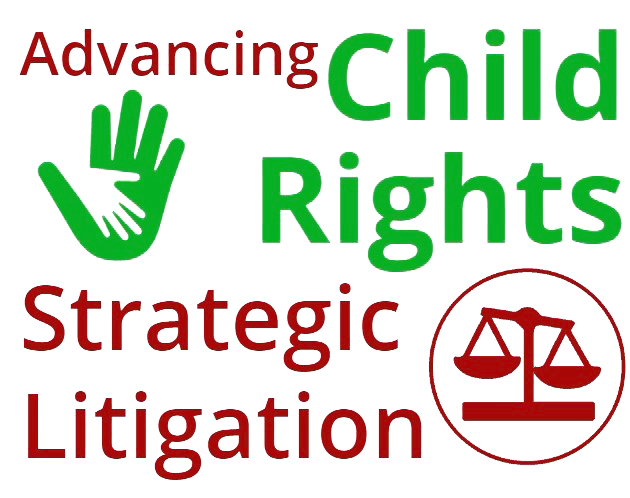Centre for Child Law v Minister of Justice and Constitutional Development 2009(2) SACR 477 (CC)2009(6) SA 632 (CC)BCLR 1105 (CC) - South Africa
It all begins with an idea.
Summary
Background
The case concerned the application of section 51 of the Criminal Law Amendment Act 105 of 1997, which created a minimum sentencing regime for specified offences. The impugned sections made minimum sentences applicable to adults and to offenders aged 16 and 17 at the time they committed the offence. An application was brought on behalf of all children who would be sentenced under this new law and the High Court found the provisions unconstitutional. As required by law, it then was referred to the Constitutional Court for confirmation.
Reasoning
The Constitutional Court declared minimum sentences invalid for 16 and 17 year-olds. The majority judgment of the Constitutional Court (7:4) held that section 28(1)(g) requires an individuated judicial response to sentencing, one that focuses on the particular child who is being sentenced, rather than an approach encumbered by the rigid starting point that minimum sentencing entails. According to the court the injunction that the child may be detained only for the shortest “appropriate” period of time requires consideration of the child and the offence he or she has committed. It requires an individually appropriate sentence. It does not import a supervening legislatively imposed determination of what would be “appropriate” under a minimum sentencing system. The Court provided child-rights reasoning regarding why the Constitution requires the courts and Parliament to differentiate child offenders from adults (para 29) and why it granted the CCL standing (para 12).
Remedy
The court declared that sections 51(1); 51(2); 51(5)(b) and 51(6) of the Criminal Law Amendment Act 105 of 1997 were unconstitutional and invalid, to the extent that they applied to persons who were under 18 years of age at the time of the commission of the offence. The court stated that to remedying the defect required that section 51(6) should be read as:
“This section does not apply in respect of an accused person
who was under the age of 18 years at the time of the commission
of an offence contemplated in subsection (1) or (2).”
The respondents were directed to provide a report to the Centre for Child Law setting out details of children who had been subject to the minimum sentence regime.
Role of children
There were no children directly involved in the case.
Enforcement and other outcomes
Following the judgment, the Child Justice Act was also brought in line with the ruling. This was significant because it also ended life imprisonment for children, as the Criminal Law Amendment Act, which included life imprisonment offences, was henceforth not applicable to child offenders. The Centre for Child Law ran a project for a number of years before and after this case in which all persons serving 3 life sentences who had been children at the time of the offence were identified, and assisted with appeals. Centre staff visited several prisoners in prisons around the country, and successfully argued an appeal for two brothers who then served shorter sentences and were subsequently released. Certain other cases were referred to Legal Aid to take forward the appeals.
Significance of the case from a CRSL perspective
The case ended minimum sentences and life imprisonment for 16 and 17 year olds, and established important jurisprudence about individuated justice for child offenders, in recognition of their reformability. It also expressly confirmed the standing of a child rights organisation to act collectively for children who would be sentenced under the new law, without having to identify any individuals.
Country
South Africa
Forum and date of decision
Constitutional Court, 15 July 2009
CRC provisions and other international law provisions
UNCRC, Articles 37(b) and 40(1)
United Nations Standard Minimum Rules for the Administration of
Juvenile Justice, Rule 17(1)(a)
United Nations Rules for the Protection of Juveniles Deprived of Liberty
United Nations Guidelines for the Prevention of Juvenile Delinquency
Domestic law provisions
Section 28(1)(g) of the Constitution which provides that detention of children must be a measure of last resort and for the shortest appropriate period of time.
Section 28(2) of the Constitution which provides that the best interests of the child are of paramount consideration in any matter that concerns the child.
Section 38 of the Constitution which provides for standing to bring a constitutional matter to court.
Section 51 of the Criminal Law Amendment Act 105 of 1997 which made minimum sentences applicable to 16 and 17 year old convicted offenders.
Related information
Information on groups and individuals involved on the case
For the applicants: Centre for Child Law, University of Pretoria, South Africa
https://centreforchildlaw.co.za/
For respondents: The Minister of Justice and Constitutional Development, South Africa
http://www.dcs.gov.za/?page_id=54
List of amicus curiae:
National Institute for Crime Prevention and the Re-integration of Offenders
Case documents
Links to:
Constitutional Court decision available at
http://www.saflii.org/za/cases/ZACC/2009/18.pdf
High Court decision available at
http://www.saflii.org/za/cases/ZAGPHC/2008/341.html
Secondary documents:
Skelton A ‘Balancing autonomy and protection in children’s rights: A South African account’,
